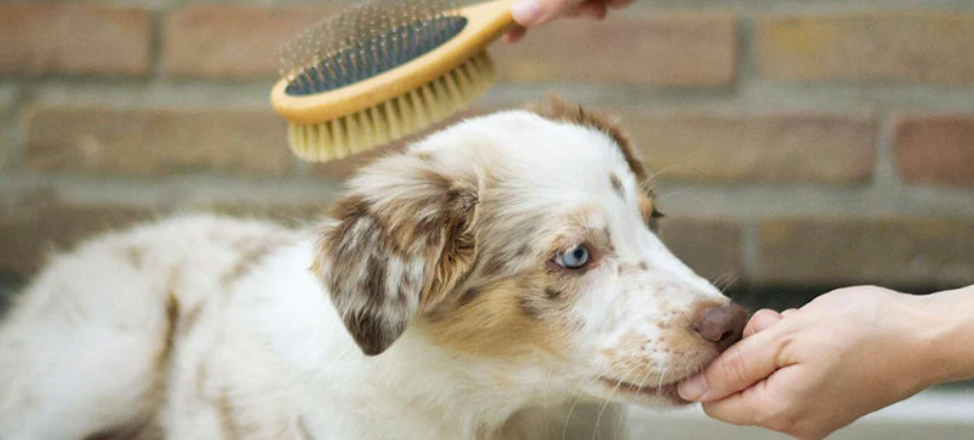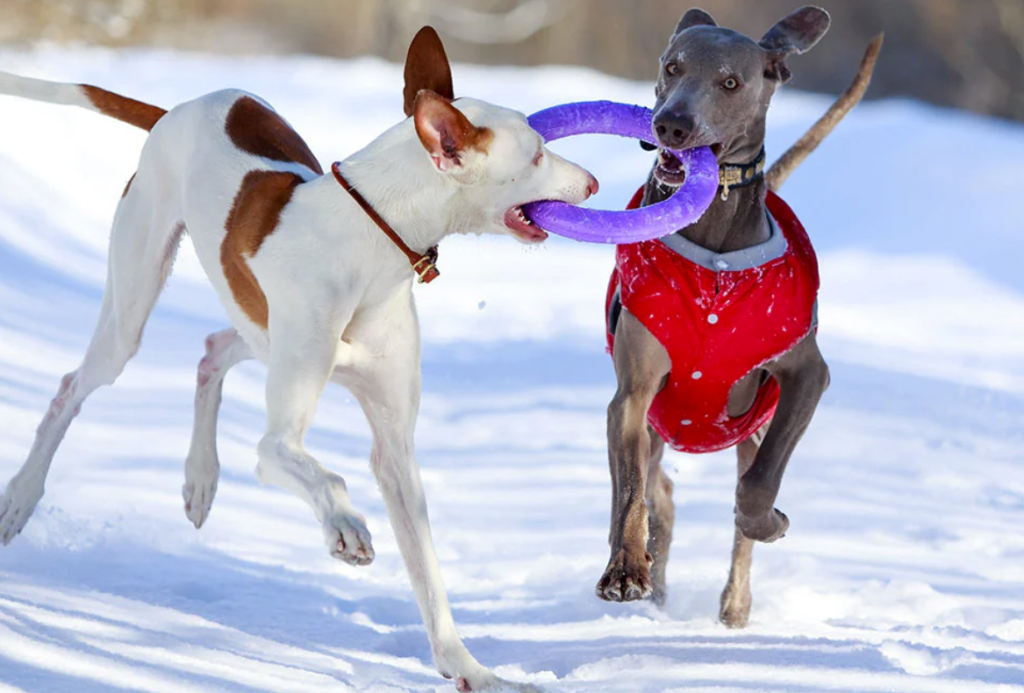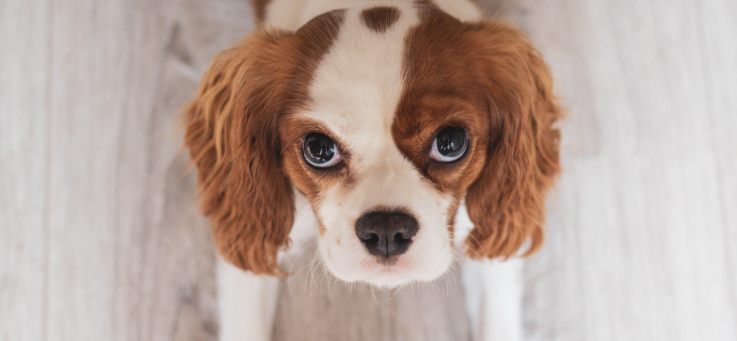As any pet parent knows, dog hair seems to find its way onto everything! While hairless breeds are the exception, all dogs shed some amount of fur. Even hypoallergenic pups, like labradoodles, aren’t completely off the hook—they shed, just less than their double-coated counterparts like huskies.

Why Do Dogs Shed?
Shedding is a natural part of life for furry creatures, including humans. If you’ve ever wondered when your dog will stop shedding, brace yourself: the answer is never. Shedding occurs regularly as hair follicles cycle through growth and rest. Dead hairs will fall out to make way for new growth. Let’s dive into the top five reasons your furry friend might be shedding, starting with a big one…
1. Seasonal Changes
Just like us, dogs need to adjust their coats to match the changing seasons. Most pups will shed more in spring and fall, but winter shedding isn’t uncommon either. Many dogs will lose their lighter coats to accommodate the thicker, insulating winter fur. Think of it as swapping out your lighter cardigan for a cozy winter parka. So, while it might seem odd to see your dog shedding in the colder months, rest assured that it’s completely normal.

2. Stress and Anxiety
Our furry friends can experience stress just like we do. Changes in their environment, such as new family members or alterations in routine, can be triggers. Alongside shedding, your dog might exhibit additional signs of anxiety—like potty accidents, changes in appetite, or destructive behavior. If you notice any of these symptoms, it might be worth addressing their emotional well-being.

3. Health Issues
Keep an eye on your dog’s shedding patterns, as excessive hair loss could indicate health issues. Conditions like endocrine disorders, skin problems, and nutritional deficiencies can all play a role in shedding. Hormonal changes, especially in female dogs after a heat cycle, can also heighten shedding. If you observe sudden or severe changes, reaching out to your vet is a smart choice.
Dehydration is another factor; insufficient water intake leads to dry skin, which can increase shedding. Make sure your pup has constant access to fresh water, as staying hydrated is crucial year-round.

4. Grooming Habits
No matter the type of coat, regular grooming is vital for your dog’s hygiene. Routine brushing—sometimes daily for certain breeds—helps manage shedding by removing dead hair before it lingers on your floors and furniture. It also helps distribute natural oils through the coat, keeping hairs where they belong: on your pup, not around the house. Remember to give your dog a bath as needed, but use shampoo specifically designed for dogs—human products can be too harsh.

5. Nutrition
Your dog’s diet significantly impacts their overall health, including their coat. Providing nutritious food contributes to a healthy, shiny coat. Some specialized dog foods aim to enhance coat health as well. If your dog suffers from food allergies, consider a grain-free, protein-rich diet to reduce issues like dry skin and shedding.

Tips for Managing Shedding
To keep both your dog’s health and your home in good shape, establish a regular grooming routine and ensure your dog stays hydrated with nutritious food. Watch for any signs of stress or health concerns in your pup. At the end of the day, those loving puppy eyes and affectionate kisses make the effort worthwhile—just don’t forget to keep those lint rollers handy!
